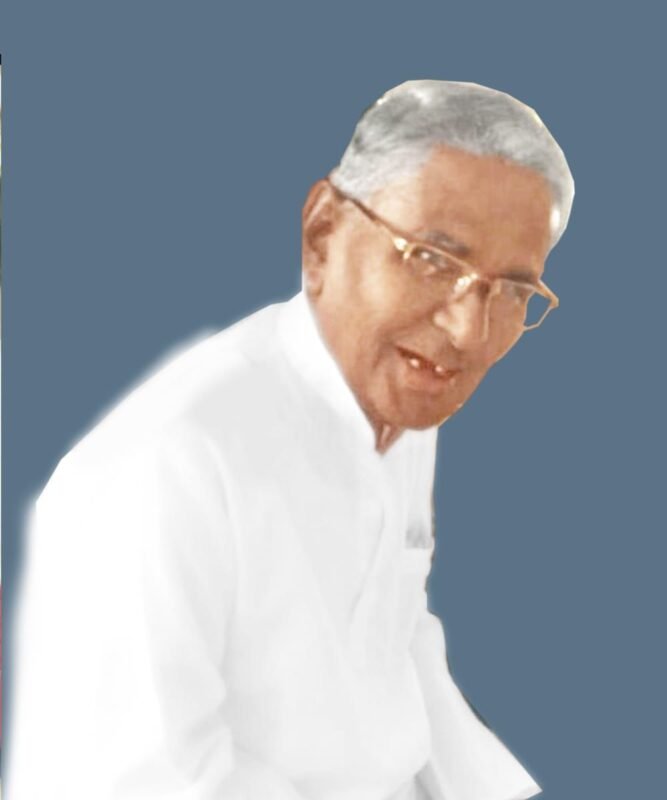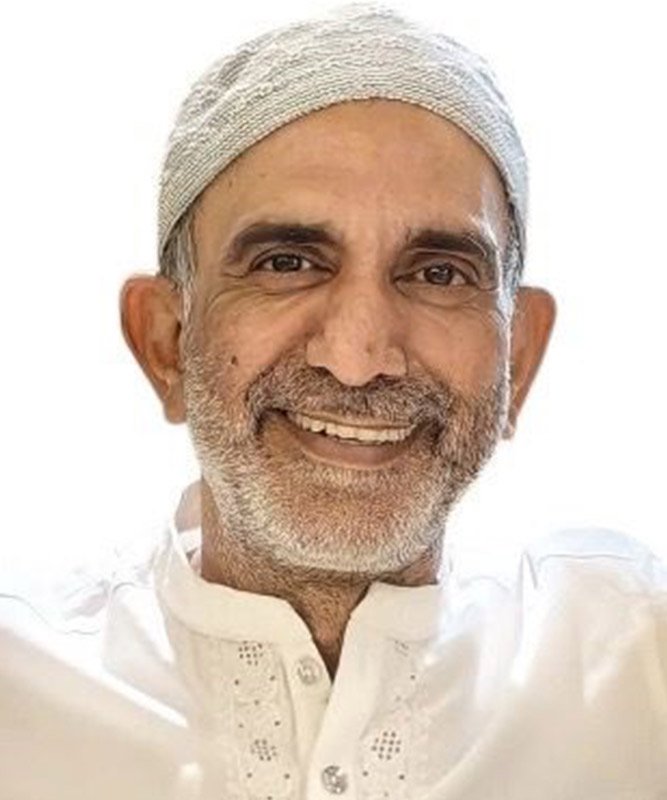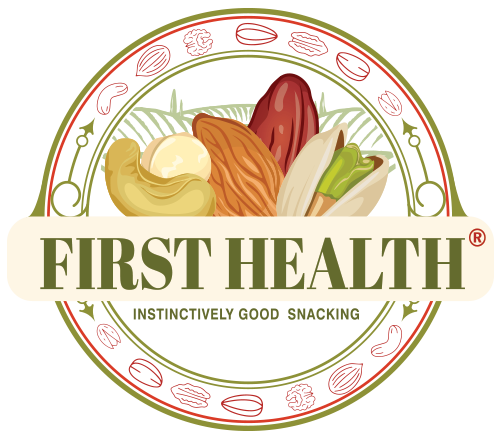
Late: Mr.K Champalal Jain
ABOUT US
Second Nature Foods is a company owned by Late:Mr:K Champalal Jain FIRST HEALTH our snacking philosophy abides by some simple rules: Instinctive. Fun. Good habit forming. In other words… it’s got to be ‘FIRST HEALTH. We also believe that the foundation of a strong mind and body starts with what you eat — and what you eat is best when found in nature. With proper portions and smarter choices, snacking can enhance, rather than hurt, your diet.
only to food that’s plucked from the ground, our satisfying using natural ingredients; like almonds, pecans, pistachios, blueberries,Whole Cranberry,Slice Cranberry,Mix Berries,red cherries No preservatives, artificial ingredients, colors or additives. Whether you’re craving something sweet, salty or sodium free,
FIRST HEALTH are Non-GMO Project Verified, gluten free,certified. It’s simply just good stuff!
FIRST HEALTH social responsibility program is focused on three pillars: environmental stewardship, responsible sourcing, and workplace and community well-being. We are committed to managing our business in a way that minimizes our environmental impact, and ensures a sustainable future for both our customers and our employees.
ENVIRONMENTAL STEWARDSHIP
Environmental stewardship is a major element of FIRST HEALTH corporate responsibility strategy. We continue to improve our environmental performance and conserve natural resources in our operating facilities.
SOURCING RESPONSIBLY
As one of the nation’s premier nut and trail mix snack manufacturers, we strive to influence responsible, sustainable behavior throughout our supply chain. The environmental and economic impact of the companies that provide us with ingredients, packaging and services are much greater than those of our direct operations. We source tree nuts, peanuts, seeds, fruits for our snacks from thousands of farmers our ingredient purchases are important contributors to local farming economies. Our supplier commitments include
WORKPLACE AND COMMUNITY
FIRST HEALTH mission is to provide nutritious energy people need to achieve their daily goals. We’re committed to enriching the lives of our employees and the communities we operate in. We actively seek to make our work environment safe and welcoming, and we believe it is both our legal and moral obligation to comply with nondiscrimination laws and to treat all employees with dignity and respect.

RAFIQ MOHAMED HUSSAIN MISTRY.
Behind Every Great Product Is Great Product Design and Development
We often don’t think much about what went into our favorite products. If we could peer into those products and see how many people were involved in the product design and development, how many steps were followed, and likely, how many risks were averted, we would be amazed. It is no small feat to take a concept and see it through development.
For innovators, entrepreneurs to large companies and everyone in between, the product design and development process is exciting, a little scary sometimes, and rewarding when it results in a killer product that continually brings in revenue. But those products are remarkably scarce. Many ideas die on the vine, failures from the start because of wrong assumptions, poor data and processes, and the wrong people working on the project. According to one estimate, there are more than 30,000 new products introduced every year, and 95 percent fail.
What does it take to come up with a great product idea and successfully bring it to life? Similarly, what does it take to make an existing product better or extend a product line with a related product that drives value and a new revenue stream?
Start with the End in Mind
A great product is one that consumers want and continually buy. It has value, not just for the developing company or entrepreneur but for the end customer first and foremost. A product you deem valuable to your brand will inevitably fail if it does not bring value to your customer – and enough of them to cover your costs and then some. Until you know for certain who your customer is and what they need (whether they ask for it explicitly or you create that demand), you will spin your wheels and get now here with product design and development.
Analytical Research
Your customer comes first, then the design, then the production. In order to know what your customer will buy, you have to use analytical data that reveals what they are already buying and why, the direct and indirect competition, market trends, where there are opportunities to bring them something new or improved with greater perceived value, and when the best time to bring that idea to market would be. In essence, in order for your product to get their attention, you have to understand the problem you are trying to solve for the customer.
The problem may be that an existing product does not do everything a customer needs. Perhaps functionality is less of a problem, but quality is lacking, presenting you with an opportunity to make a better version that drives out the competition. The product may not even exist yet, but your analysis reveals there is an opportunity to fill that void. You may even have a product idea that is nearly identical to an existing product on the market but believe you can develop and sell yours at a more attractive price point, or partner with bigger resellers to get it in front of more people.
If you are reselling an existing product on Amazon or making slight improvements on an existing product, it is helpful to use predictive analytics to take trend data and understand the market place from a sales velocity, search, ratings and reviews, and pricing perspective. Predictive analytics will tell you about your ecosystem in a predicted way.
Related: Amazon FBA Sourcing Game Changer 2019 – How to Get Better Price & Quality Than Alibaba
You can also take keywords and related words in common search terms to discover what people are looking for and if there is an existing product that matches, uncovering opportunities to fill a niche. The analytics will tell you how much competition that product may have, plus the key performance indicators (KPIs) to launch your product successfully and get to the top of the search page for more eyes. It helps you decide if your idea is good and if existing product reviews are terrible, how you can take advantage of the opportunity.
User Research
While you can get a lot of information from analytical research, it is always a good idea to test your assumptions in the real world before you take the next step. Establish test markets to conduct customer surveys and get feedback to see if your hypotheses are accurate. Does your research indicate there is an opportunity for you? What do your customers say they want? What price point do they indicate is viable? How often would they purchase your product? Questions like these will solidify your decision to move forward or not, giving you peace of mind your potential investment of time and resources will be worth the effort.
Whatever angle you take, keeping the customer as your center point will ensure you are designing and developing the right product for the right customer at the right time.
Work with The Right People
Product design is critical in the product development process. This is where you partner with seasoned product designers and engineers to work through every angle of a product idea. Product designers should not just move forward with your rough sketch or sketch what you tell them to sketch. If you select the right designers, you should be able to lean on them for guidance on what is realistic, manufacturable, and will be cost-effective to build.
Specialized Product Designers
If you want to get the most value from your product design team, you should purposely seek out designers who specialize in designing products like yours. For instance, if you are bringing to market a new athletic shoe, working with a product designer who has an impressive portfolio of athletic shoe expertise will yield a better product faster with fewer revisions than working with a mobile applications designer or general designer with no particular shoe experience.
Specialized Product Engineers
The same thing can be said for the engineers you bring onto the team. Depending on your product, you may need a mechanical engineer, electrical engineer, software engineer and/or other engineering specialist to add to your design team. These engineers will work hand in hand with your chosen designer to optimize the product design, thinking through any potential issues with each iteration, going through what-if scenarios, and putting themselves into the shoes of your customer to determine what they would want in an ideal product based on the data you collected in the research phase.
Your design and engineering team will look at every angle and begin the artistic renderings of your product. This begins with sketches and ends with a prototype. There are typically multiple sketch revisions and the final approved sketch may look nothing like what you originally had in mind. That’s often a good thing. Bringing a product from concept through the design and development process takes a team effort, and if you work with the right people, your initial concept will have gone through rigorous review and revisions to bring forth the optimal design.
